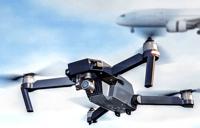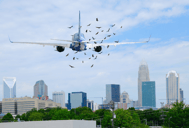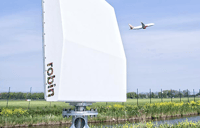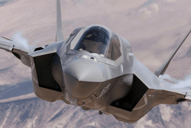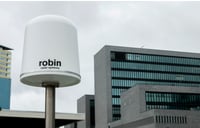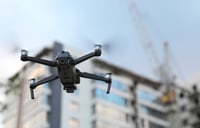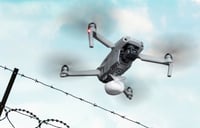Airports are major transportation hubs that see millions of people travel through them every day. One of the UK's busiest airports, London Heathrow, once recorded 80.9 million passengers in a single year. Airports manage high number of people daily, in addition to employees, cargo, and planes. For airport security managers, managing airport safety and security is a constant concern.
Unmanned Aircraft Systems and Airports
The interest and use of unmanned aircraft systems (UAS) have presented a wide range of safety and operational challenges for airports. As their popularity continues to rise, airport operators must deploy new technologies to detect and mitigate unauthorised activity.
UAS have long been a concern. As early as 2016, the U.S. Office of Airport Safety and Standards (AAS) issued formal guidance and policy documents regarding counter UAS radar detection and mitigation technology at airports.
Meanwhile, to mitigate the growing risk, The European Union Aviation Safety Agency (EASA) published a manual in 2021 to help airports tackle the growing drone threat. European regulators also made it mandatory for civil drone users to register their UAS and pass an online exam, so they better understand where they can and can't fly.
But regulation isn't enough to address the threat. Airports must establish a robust strategy for managing UAS risks, as well as reliable detection and mitigation procedures if a UAS were to disrupt your airspace.
Counter UAS Technology
Counter-drone and UAS technology is a wide range of solutions that allow you to detect, classify, and mitigate drones. It includes camera systems and specialist drone detection radar.
At an airport, preventing UAS incidents requires 24/7, 360° coverage. This provides your ground teams with the full situational awareness they need to respond to threats. Your exact drone detection solution will depend on your airport's specific needs, and an experienced drone detection radar provider can help you establish what those might be. But in general, we recommend counter UAS technology that can:
- Accurately drone detection over a wide area (at least 3km)
- Distinguish between UAS types and other objects, like birds
- Locate threats in real-time, in any condition
- Track and monitor in real-time
- Detect autonomous UAS
- Track multiple moving objects simultaneously
4 Tips to Upgrade Your Counter Drone Capabilities at Your Airport
Whether you're starting from scratch, have existing systems or policies in place, or want to improve them, implementing effective counter UAS radar and capabilities is essential, especially as types of UAS technology continue to evolve. Here's what you can do to improve measures and capabilities at your airport.
1. Understand the Threat
Threat mitigation isn't just about technology, and your policy doesn't just belong in the board room or security room.
Implement a robust plan for educating your airport staff about the risks of UAS. Every member of your airport, such as the flight engineers, air traffic control officers, security guards, and even ground handling operatives, must understand the basic threat of UAS. By doing so, any individual who is able to potentially observe a UAS will comprehend the potential security concern. Then, the next step is to ensure they can easily report it to the relevant channel at your airport, such as your security team.
2. Implement Surveillance Systems
Drone monitoring equipment can be passive (simply looking or listening) or active (sending a signal out and analysing what comes back). There are a few types of drone detection solutions available, such as cameras, acoustic sensors, radio frequency analysers, and radar. The best providers use a combination of these, selected for your specific needs, to provide you with complete, comprehensive mitigation and detection capabilities.
When it comes to surveillance, it's especially important to use a solution that lets you detect and classify UAS. The EASA identifies separate categories of UAS risk:
- Open, low risk: general public, recreational purpose, model flying, and photographers
- Specific, higher risk: below VLOS operators, transportation of goods
- Certified, risks equal to manned aviation: Package delivery over people, air taxi
- Additional risk: home-built drones, deliberate non-permitted drone usage
Your teams must be able to distinguish between these risks. Some equipment like radio frequency analysers, can identify a particular model of drone, or even identify the drone’s or controller’s digital fingerprint, like a MAC address for example. This level of identification is useful for prosecution purposes if it's needed.
3. Deploy Counter UAS Technology
Drone countermeasure equipment exists, but at the moment, it's limited to use only by military and law enforcement agencies. This includes practices like disabling a drone, destroying a drone, or taking control of a drone.
Other counter drone and UAS technology, like jammers, GPS spoofers, high-powered microwave devices, and even nets and net guns are available. But at airports, it's recommended that detection and mitigation using market-leading drone detection system is by far the strongest and most effective way to manage your counter UAS radar capabilities.
4. Collaborate with Law Enforcement
No UAS sighting should go unreported. As a legitimate threat to airport safety and security, it's important to closely collaborate with law enforcement to record every sighting and incident. It also helps you establish a clear procedure for managing UAS sightings.
At the local level, the EASA recommends collaborating with air traffic control and law enforcement agencies to:
-
Build a drone sighting reporting mechanism
-
Develop incident response protocols and procedures
-
Create a 'memorandum of understanding' that outlines the role of each party in the event of an incident
Improve Your Counter UAS Capabilities and Make Your Operations Safer
Security is a top priority at airports. By implementing a robust counter UAS system with the support of an experienced radar tracking technology leader, you have the tools needed to effectively counter the drone security threat.


